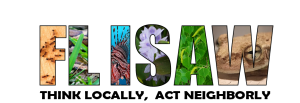According to the University of Florida/IFAS Invasive Species Council, invasive species are organisms that are non-native to an area, introduced by humans, and are causing an environmental or economic problem. For residents and visitors to Florida, this definition is not cause for surprise. Iguanas, pythons, and lionfish are invasive animals that have become more well-known in our state because of their abundance and consistency in sighting. Invasive plants are also a concern, such as beach vitex, air potato and Brazilian pepper. These plants present challenges to habitat management and choke out native flora.
Since Florida has sub-tropical and temperate conditions all year-round, our environment serves as a perfect host for thousands of invasive species including birds, mammals, invertebrates, fish, and plants (Harvey & Mazzotti 2014). Most commonly, invasive species are introduced to their new surroundings through pet release, whether intentional or accidental. Ballast water from shipping vessels also functions as a vehicle for invasive species transport.
In addition to displacing native species’ habitat, invasives can outcompete natives for space, food, and nutrient sources. Invasive species also disrupt natural processes. Invasive species affect all of Florida’s ecosystems, both terrestrial and aquatic. Once an invasive species becomes established, it is substantially more difficult to eradicate it—the most realistic course of action is controlling the population.
At both UF/IFAS Extension and Florida Sea Grant, we work extensively to engage our stakeholders about invasive species, from educational programs to invasive species documentation and removal events. In anticipation of the upcoming Florida Invasive Species Awareness Week (May 16-23, 2020), several of our agents decided to collaborate on an invasive species video project, each showcasing short public-service-announcement (PSA)-style videos featuring a different species. These videos will play a critical role in our Extension efforts, particularly when it comes to trying to nip an invasion in the bud—in other words, try to minimize the impacts of an invasive species, particularly if a species has found its way to a new area.
Check out the species highlighted this year in the PSAs featuring our agents:
Several key steps can be taken to reduce impacts to invasive species in Florida. First, if you have an exotic or invasive pet and no longer want it, consider participating in FWC’s Pet Amnesty Program. Secondly, familiarize yourself with some of the most common invasive species that are located where you live or work. You can report these sightings either to www.Ivegot1.org, or to the Florida Invasive Species Partnership Website. Finally, you can volunteer for invasive species removal workday events through local government agencies or non-profit organizations, and participate in bioblitz activities that document local biodiversity in an area. The most important component of all of this is sharing this message, so that people have a greater understanding of the issue and will hopefully be more likely to become part of the long-term solution of invasive species control.
References:
Harvey, R., Mazzotti, F. 2014. The Invasion Curve: A Tool for Understanding Invasive Species Management in South Florida. Accessed May 5, 2020.
 0
0

